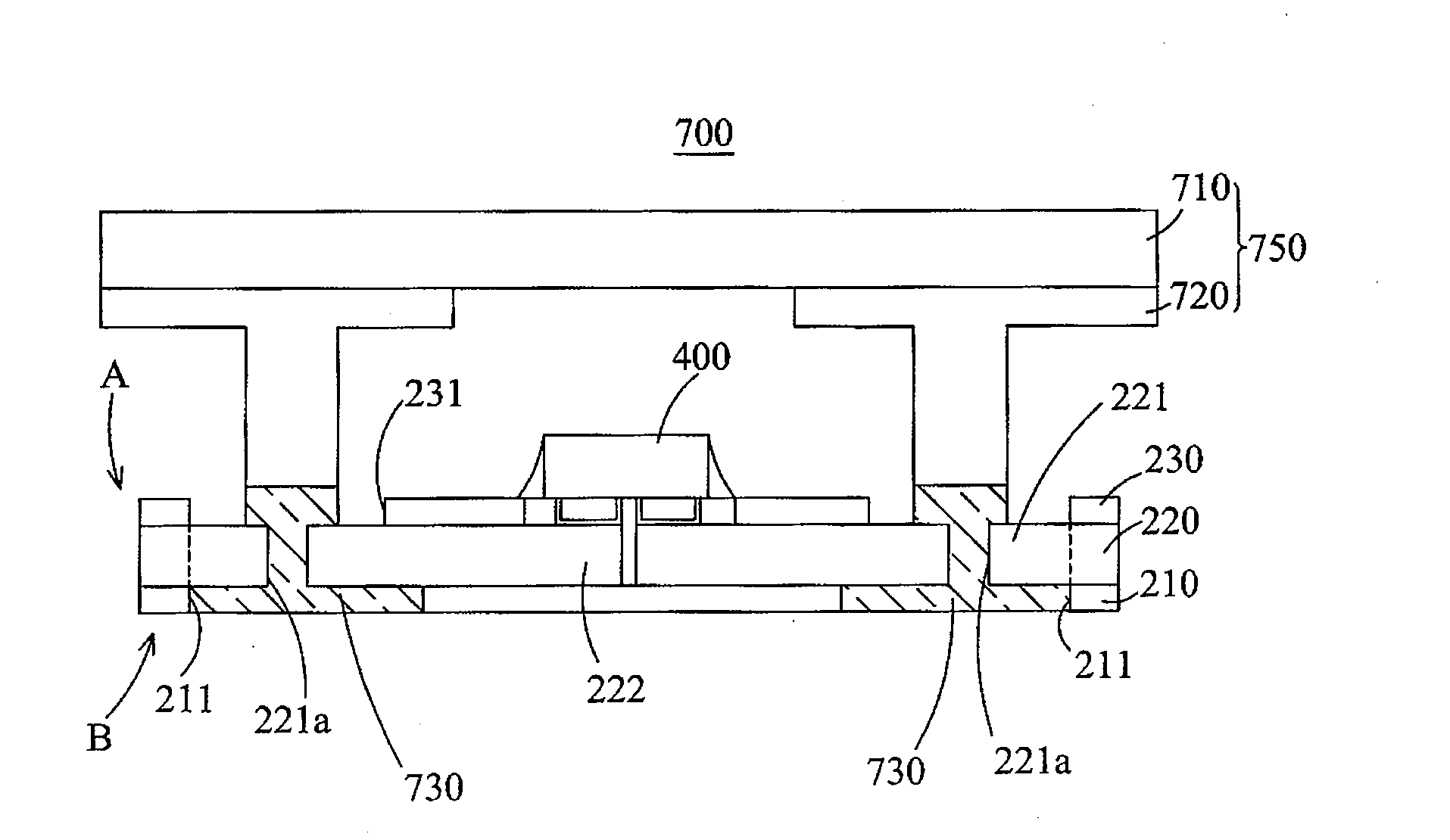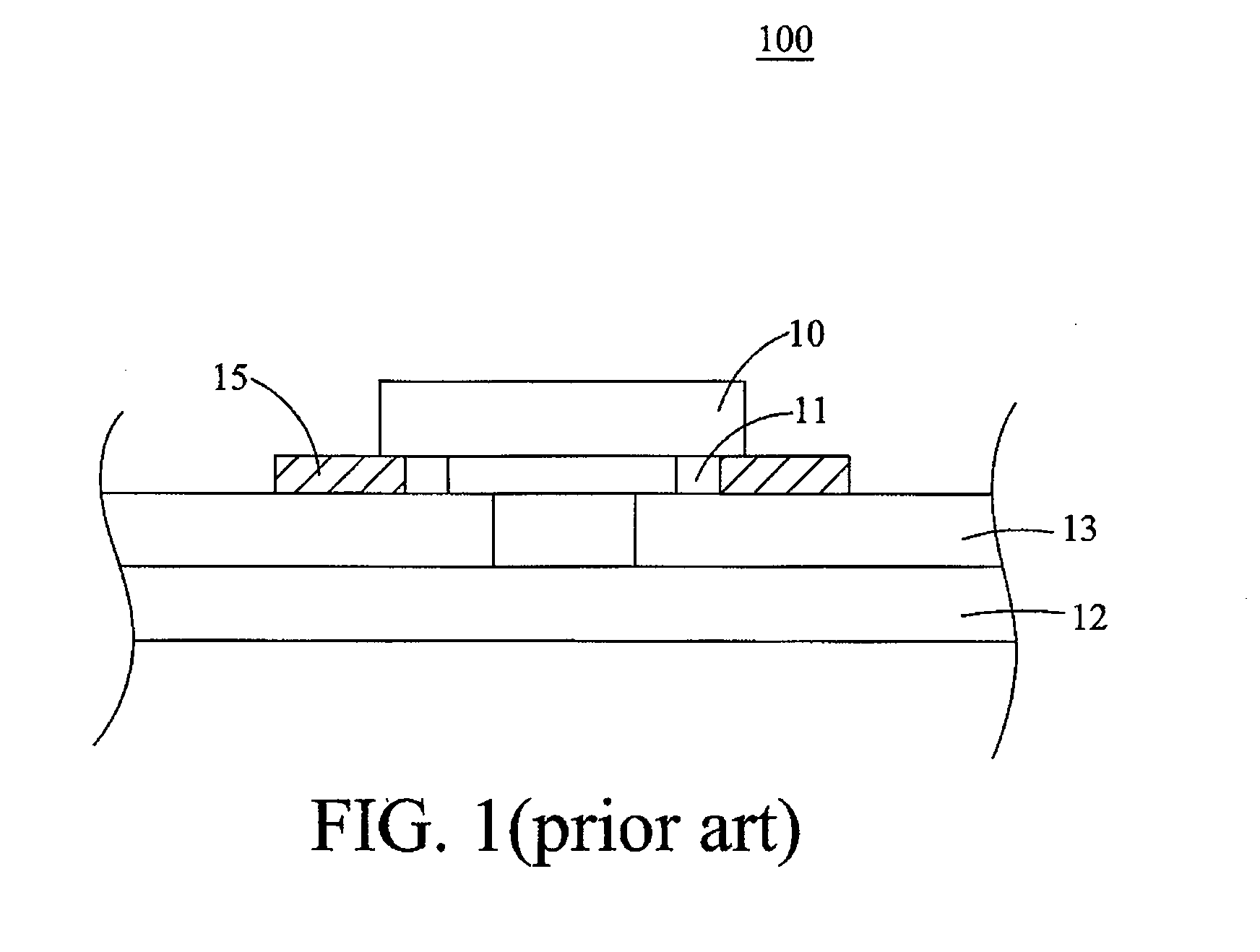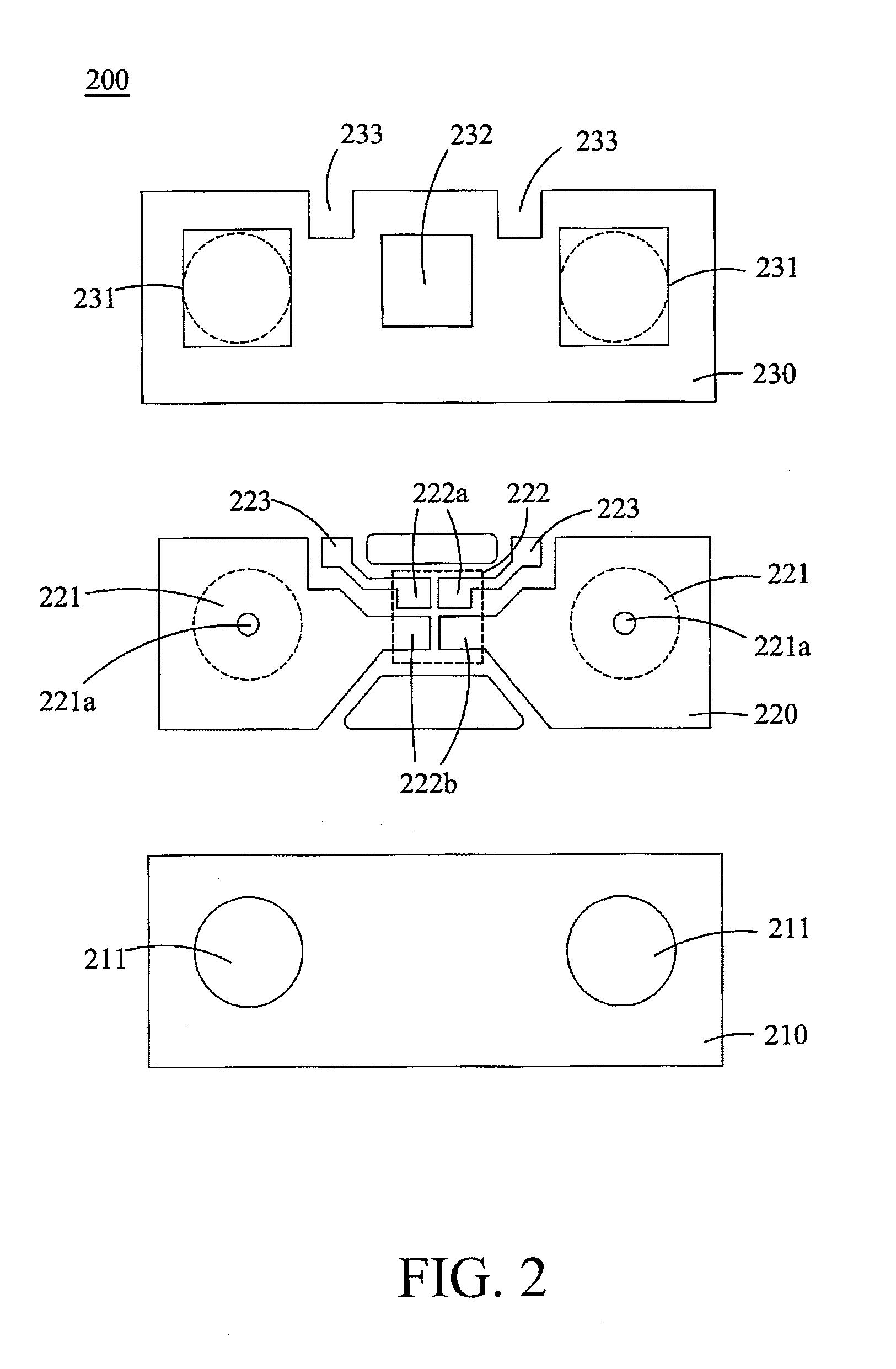Integrated circuit package module and method of the same
- Summary
- Abstract
- Description
- Claims
- Application Information
AI Technical Summary
Benefits of technology
Problems solved by technology
Method used
Image
Examples
Embodiment Construction
[0021]The preferred embodiments of the present invention will now be described in greater details by referring to the drawings that accompany the present application. It should be noted that the features illustrated in the drawings are not necessarily drawn to scale. Descriptions of well-known components, materials, and process techniques are omitted so as not to unnecessarily obscure the features of the invention.
[0022]FIG. 2 shows an explosive view of a carrier 200 supporting a chip in accordance with one embodiment of the present invention, which is used here to illustrate the structure of the carrier 200 and method of the same. As shown in FIG. 2, the method of manufacturing the carrier 200 includes providing a first insulating layer 210. The first insulating layer 210 can be made of polyimide, polyethylene terephthalate, epoxy resin, material of dielectric layer having glass fiber typically used in printed circuit board (such as the glass fiber plate used in FR4), or the combin...
PUM
 Login to View More
Login to View More Abstract
Description
Claims
Application Information
 Login to View More
Login to View More - R&D
- Intellectual Property
- Life Sciences
- Materials
- Tech Scout
- Unparalleled Data Quality
- Higher Quality Content
- 60% Fewer Hallucinations
Browse by: Latest US Patents, China's latest patents, Technical Efficacy Thesaurus, Application Domain, Technology Topic, Popular Technical Reports.
© 2025 PatSnap. All rights reserved.Legal|Privacy policy|Modern Slavery Act Transparency Statement|Sitemap|About US| Contact US: help@patsnap.com



